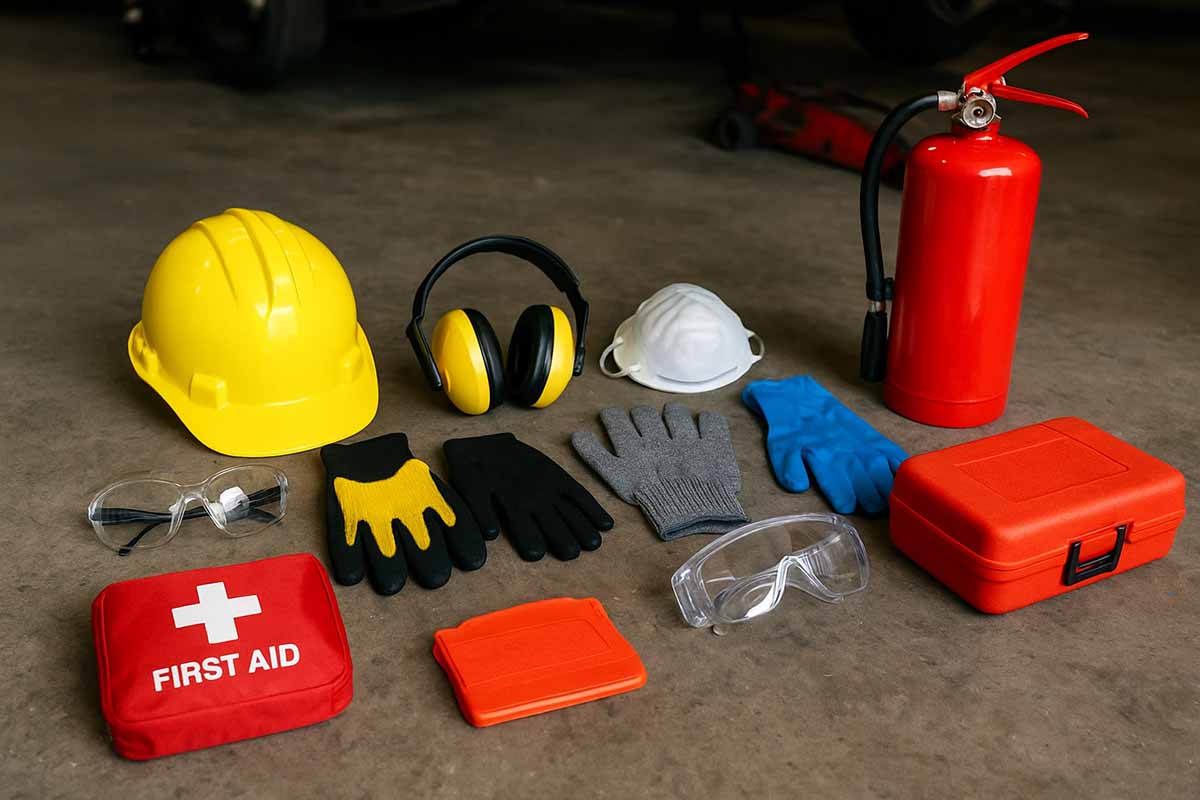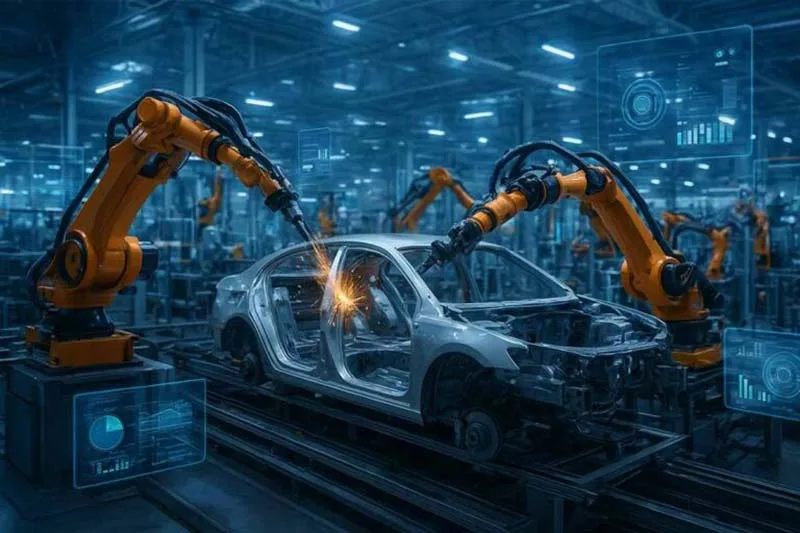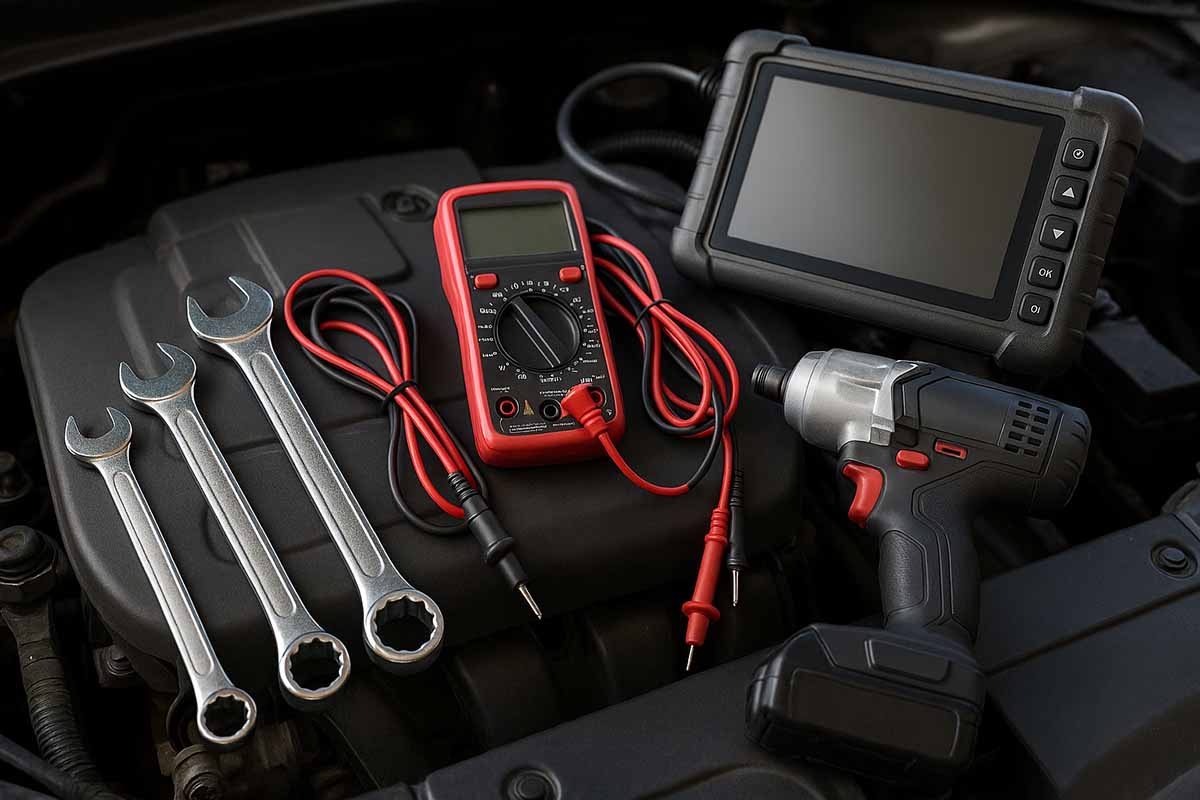Why Industrial Tools Are the Backbone of the Automotive Industry?
The automotive industry thrives on precision, speed, and efficiency. Without industrial tools, building today’s modern vehicles – from family sedans to electric supercars – would be nearly impossible. From robotic arms assembling engines to torque wrenches ensuring perfect wheel alignment, industrial tools fuel the entire supply chain.
But here’s the truth: while these tools boost efficiency and safety, they also come with challenges such as high maintenance costs, training requirements, and dependency on advanced technology. In this article, we’ll explore the many sides of industrial tools in the automotive industry: their applications, key features, advantages, disadvantages, and future potential.
Key Applications of Industrial Tools in the Automotive Industry
Industrial tools play critical roles across multiple stages of automotive production. Here are the most important applications:
1. Manufacturing and Assembly
- Robotic Welding Machines – ensure strong, precise welds in chassis and body frames.
- Torque Wrenches & Nut Runners – provide consistent tightening of bolts for safety.
- CNC Machines – deliver ultra-precise machining for engine blocks and transmission parts.
2. Quality Control and Testing
- 3D Laser Scanners – check accuracy of manufactured parts.
- Ultrasonic Testers – detect internal flaws in materials without damaging them.
- Coordinate Measuring Machines (CMMs) – verify exact dimensions and tolerances.
3. Painting and Finishing
- Spray Guns & Automated Paint Robots – guarantee uniform coatings while reducing waste.
- Polishing Tools – bring vehicles their showroom shine.
4. Maintenance and Repair
- Diagnostic Scanners – identify electronic and engine issues.
- Hydraulic Lifts & Jacks – allow safe and easy vehicle access for mechanics.
- Impact Wrenches – speed up tire changes and heavy-duty fastening tasks.
Key Features of Automotive Industrial Tools
When selecting tools for automotive use, companies and workshops look for:
- Precision and Accuracy – even a millimeter error can affect safety.
- Durability – tools must withstand constant use in demanding environments.
- Ergonomics – user-friendly designs reduce fatigue and injury risks.
- Automation Capability – compatibility with robotic systems for high-volume production.
- Safety Compliance – meeting ISO and OSHA standards for worker protection.
Technical Specifications You Should Know
Industrial tools used in automotive manufacturing often include specifications such as:
- Torque Range (e.g., 10–2000 Nm for pneumatic wrenches)
- Speed & Power Output (measured in RPM for drills and grinders)
- Accuracy Tolerance (e.g., ±0.01 mm for CNC machines)
- Weight Capacity (e.g., hydraulic lifts rated for 2–5 tons)
- Energy Consumption (to balance efficiency and operational costs)
Advantages of Industrial Tools in Automotive Production
✔ Increased Efficiency – automation shortens production times.
✔ Better Quality Control – precise tools reduce human error.
✔ Cost Savings Long-Term – despite high upfront costs, they reduce waste and defects.
✔ Enhanced Safety – modern tools minimize risks compared to manual methods.
✔ Adaptability – compatible with new automotive technologies like EVs.
The Challenges and Downsides
However, not everything shines under the hood:
- High Initial Costs – advanced robotics and CNC systems require huge investments.
- Maintenance Complexity – regular calibration and servicing are essential.
- Skilled Labor Shortage – operators need extensive training.
- Downtime Risks – a breakdown of critical equipment can halt entire production lines.
- Environmental Concerns – certain tools consume high amounts of energy.
Future Trends: Where Are Automotive Industrial Tools Heading?
The next decade will reshape the role of industrial tools in automotive manufacturing:
- AI-Powered Diagnostics – tools that self-monitor and predict breakdowns.
- Green Manufacturing – energy-efficient machinery reducing carbon footprints.
- 3D Printing & Additive Manufacturing – on-demand spare parts production.
- Cobots (Collaborative Robots) – working safely alongside human operators.
- Smart Data Integration – real-time performance tracking with IoT connectivity.
Interesting Fact
The fastest robotic welding arm in the world can complete a perfect car door weld in under 12 seconds — faster than it takes most people to tie their shoes.
Lesser-Known Fact
Some CNC machining centers in automotive factories operate 24/7 without lights – known as “lights-out manufacturing” – because robots don’t need human supervision, dramatically cutting energy bills.
Industrial Tools in the Automotive Industry FAQ
Learn More About Industrial Tools In Automotive Industry
- Industrial Tools in the Automotive Industry
- Digital Twins in Automotive Tooling: Smarter Maintenance, Fewer Breakdowns
- Comparing Pneumatic vs. Electric Tools in Automotive Workshops
- How Industry 4.0 Is Reshaping Automotive Assembly Lines
- Trends in Automotive Manufacturing Automation
- Impact of Industry 4.0 and IoT on Automotive Tooling
- Essential EV Toolkits for Modern Automotive Work
- Reviews of 5 Leading Automotive Tool Brands
- Top Tools for Automotive Repair and Diagnostics
- Specialized Equipment for Engine Rebuilding
- Automotive Fasteners and Torque Specs Explained
- Safety Tools and PPE in Automotive Workshops
- Troubleshooting Common Automotive Tool Problems
- Top Automotive Tool Brands Reviewed
- Fasteners in Automotive Manufacturing: What Makes the Cut?
- How to Use a Torque Wrench in the Automotive Industry
- Automotive Torque Wrench Buying Guide 2025
- Best Smart Tightening Tools for Industrial Assembly (2026 Guide)
Conclusion: Driving the Future with Industrial Tools
Industrial tools are not just machines – they are the engines behind engines. They enable carmakers to produce safer, more efficient, and more innovative vehicles every year. While costs and challenges exist, the benefits far outweigh the drawbacks when tools are chosen and maintained wisely.
Now it’s your turn!
Have you worked with industrial tools in the automotive industry, or are you curious about how they’re changing the future of cars? Share your experiences in the comments below, and don’t forget to share this post on social media to start the conversation.





